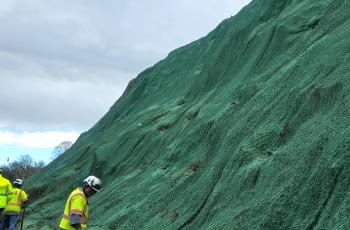DC Water Announces Revised Partial Volumetric Rate Plan for Clean Rivers Program
The Clean Rivers impervious area charges that show up on customer bills will gradually shift to provide more relief to DC Water customers who consume less water, Chief Executive Officer David L. Gadis announced today.
The new ‘volumetric’ charge system will not replace the entire structure of the Clean Rivers Impervious Area Charge but instead will offer an opportunity for customers to reduce their bills. The shift is planned to begin on October 1 following approval today by the DC Water Board of Directors.
“This is an important shift in how we pay for the Clean Rivers program and I strongly believe it’s a much better formula,” said Mr. Gadis. “We’ve heard from a very diverse group that they believe volumetric charges are more sensible and equitable and we thank our customers for this input.”
Currently, CRIAC charges are pegged solely to the square footage of the impervious area attached to a property. In cases like parking lots, large dwellings and properties with private roads or sidewalks, the CRIAC charge can rise significantly higher than the reminder of the water consumption bill.
Under the new partial volumetric structure, customers would pay on that impervious area but also based on how much water they use, which typically relates to the amount of wastewater they produce. Flushing the toilet, doing laundry, running the dishwasher or otherwise using water would be factored in to the CRIAC charge.
The majority of customers pay what amounts to a single Equivalent Residential Unit, or ERU each month, giving them a CRIAC charge of $23 this year.
Under the revision, a typical customer will pay 63 percent of their bill based on the square footage of their lot but then 37 percent based on how much water they consumed in the previous month. The change will be phased in.
Some customers will save money with this new structure, such as cemeteries, most churches and many seniors or customers who live in larger homes but use very little water. However, apartment buildings or condominium buildings, along with most commercial office spaces, will likely see their CRIAC charges increase.








